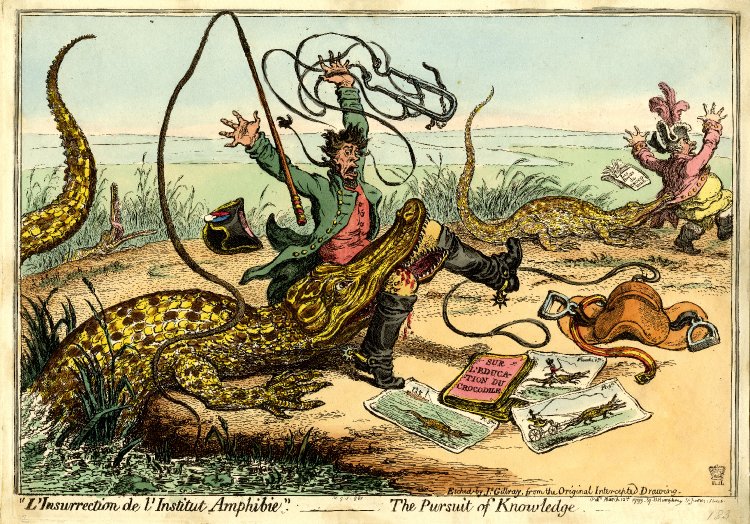
Have a look at the figure above. In the image we see an experiment that goes terribly wrong. Two persons want to transfer their knowledge on horses and try to domesticate crocodiles. We see a whip, a bridle, a saddle and an instruction manual “education for crocodiles”. But crocodiles are not horses, they bite back, and turn the scene into a blood bath.
200 years later it is still true
Gillray created this caricature in 1799, and it was a comment on politics. It relates to personal letters from enraged French officers in Bonaparte's Egyptian command [1]. It is the trait of a caricature to exaggerate its subject and should of course be interpreted metaphorically. The crocodiles may represent the Egypt people Bonaparte tried to subordinate as he did in many Europian countries. On the other hand, the exaggeration, which is also an abstraction, allows us to take the image out of its context and apply it to other situations. Here come two examples.
My first encounter with this image was at an exhibition on the “Age of Reason”. The topic of that exhibition was the time of the transition from religion to science that took place at the end of the 18th century: The first anatomy atlas of the inside of the human body appeared, the earthquake of Lissabon shattered faith in god, and it was the time of the French revolution. In this context, Gillray's caricature appears as a critic of the new stream of thought at that time. Maybe the people overused the scientific method in the first enthusiasm, and rather than seeing the object openly and attentively with some kind of wonder, the persons in the picture simply apply the knowledge they read in books. This goes wrong, and maybe this overacting, this trying-too-hard, is why the age of reason entered eventually the age of Romanticism, which prized intuition, emotion and imagination over the scientific rationalism.
Today, some people are very enthusiastic about data. They proclaim the age of dataism: cheap storage and lots of mobile sensors everywhere lead to huge amounts of data and many new insights. However, Gillray's caricature can serve as a warning here. Some problems will not be tamed and utilized with the right dataset and some analysis method, but will bite back.
- Draper Hill Fashionable Contrasts. Caricatures by James Gillray, Phaidon Press, 1966
No comments:
Post a Comment